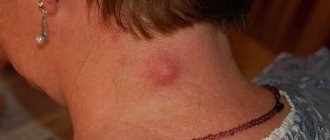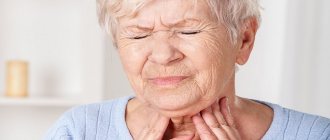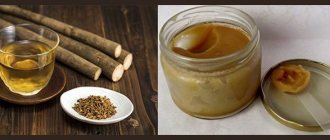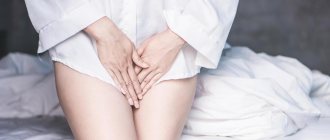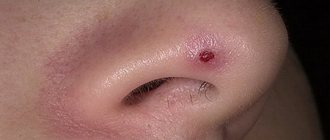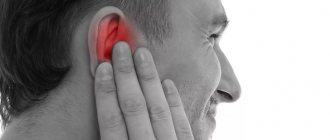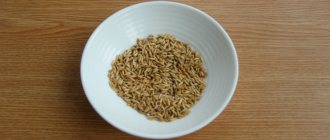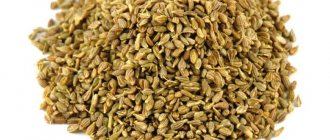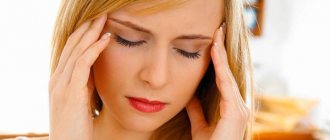Knee pain is a dangerous symptom that can indicate various diseases and injuries. It prevents the patient from moving and leading an active lifestyle, forcing him to give up sports and hobbies, which additionally provokes an exacerbation of the disease. Treatment methods depend on the disease and its stage, as well as on the patient’s age and other nuances. Only a doctor can prescribe medications. Treating a knee joint at home does not eliminate the need to be examined by a doctor, but it can speed up the healing process if you choose the right prescription.
Causes of knee pain
Knee joints can hurt for various reasons. Pain is a sign of injury, inflammation or degenerative changes in tissues, which are accompanied by their destruction.
The most common causes of chronic knee pain are:
- old injuries that periodically make themselves felt;
- arthritis - inflammation of joint structures;
- arthrosis - deformation of cartilage due to metabolic disorders;
- inflammatory diseases of periarticular tissues - ligaments, tendons, synovial bursae.
If pain occurs, it is better to undergo an examination and determine its cause. It is possible to cure a disease completely and without consequences only if you know about its source and mechanism of development. Injuries (cracks, dislocations, fractures) are treated only in a hospital with mandatory x-rays. Chronic joint diseases can be treated at home. To do this, you need to take medications, follow a diet and use traditional medicine recipes. The main feature of such diseases is that they are rarely completely curable. However, if you adjust your lifestyle and start a course of therapy on time, you can get rid of painful sensations and prevent further development of the pathology.
The role of diet in the treatment of joints
Poor nutrition is the cause of the development of various metabolic pathologies. As a result of the abuse of fast food, fatty and salty foods, and carbonated drinks, tissues do not receive enough nutrients. In addition, junk food affects the condition of blood vessels and reduces their tone, as a result of which the blood supply to the cartilage is disrupted.
To prevent knee diseases and maintain knee health, you need to follow the basic principles of a healthy diet:
- Protein foods (meat, fish, dairy products) can be consumed along with greens, vegetables and fruits. It is better to move dishes with a high starch content (potatoes, cereals) to a separate meal.
- The main source of carbohydrates is cereals. It is better to give them preference in the first half of the day.
- You should exclude sweets, baked goods, fatty foods and foods fried in large amounts of oil from your diet. Harmful products also include instant coffee, sugar, carbonated drinks and alcohol.
- For cartilage diseases, it is important to consume collagen, which is necessary for its restoration. Its main sources are gelatin, jellied meat and dishes containing gelatin (jellied fish, jelly, jelly). It is also worth taking chondroitin-based drugs, which can be purchased at the pharmacy.
Poor nutrition causes excess weight. Articular cartilage, which does not receive enough oxygen, vitamins and minerals, also bears excessive load. As a result, it wears out, becomes thinner, and the main pressure falls on the bones. This phenomenon is a mechanism for the development of arthrosis and the appearance of knee pain.
Drug treatment of knees
Drugs that are prescribed for knee pain are anti-inflammatory ointments, creams and gels. The choice of remedy depends on the stage of the disease and the nature of the pain. If the joint swells and the local temperature rises, cooling compresses can be used. This procedure relieves swelling, relieves acute inflammation and activates blood circulation. If the disease has entered a chronic stage, warming ointments are indicated.
You can choose one of the medications from the list and treat sore knees at home:
- Diclofenac is a gel for external use, belongs to the group of non-hormonal anti-inflammatory drugs. The active substance relieves inflammation and swelling, relieves pain. It is applied in a thin layer to the joint and gently rubbed in with massage movements.
- Theraflex are capsules for oral administration. The drug helps restore cartilage and eliminates the symptoms of arthrosis. The optimal duration of treatment is from 3 to 6 months, 2-3 capsules per day. The drug can be taken simultaneously with non-steroidal anti-inflammatory drugs.
- Nimulid has anti-inflammatory and analgesic effects. You can choose this product in the form of tablets or gel. The tablets are taken twice a day, and the gel is applied in a thin layer to the sore knee and rubbed in. The drug is indicated for gout, rheumatoid arthritis and other joint diseases.
- Artra are capsules that contain chondroitin sulfate. This substance is necessary for the body to build cartilage and bone tissue and normalize metabolic processes. The drug is used for arthrosis, osteoporosis, as well as for cracks and fractures of bones for rapid healing. It can be used simultaneously with non-steroidal anti-inflammatory drugs, but it significantly reduces the need for them.
- Piroxicam is an anti-inflammatory gel for external use. It has a pronounced analgesic effect, relieves pain and swelling in the knee.
The attending physician will advise how to treat knees for various diseases. If any drug does not suit you, turns out to be ineffective, or causes an allergy, you should stop taking it and replace it with one of its analogues. At home, drug treatment can be combined well with exercises and massage.
Therapeutic baths for joint pain
An equally pronounced therapeutic effect for diseases of the musculoskeletal system is provided by medicinal baths. They have a systemic effect on the entire body. In combination with other methods they give quick and positive results.
There are herbal and mineral baths in the fight against joint pathologies. In the first case, various medicinal plants are used - calendula, chamomile, sage, string.
They perfectly soothe, reduce pain, inflammation and swelling. Helps eliminate muscle tension, accelerate blood circulation and improve motor activity.
Mineral baths are a salt solution with different concentrations, depending on the condition of the sick person. It is optimal to use 1.5-2 kg of sea salt per 200 liters of water.
The duration of the course of therapy in the first and second cases is 1-2 weeks. You need to take a bath once a day for 30-40 minutes.
Before starting treatment of joints using traditional methods, contraindications should be taken into account. It is important to remember that the bath is not recommended for persons with any pathologies of the cardiovascular system. Also, the water temperature should not be allowed to rise above 40-45 C. It is advisable to conduct a preliminary consultation with a doctor before a course of medicinal baths.
Traditional methods are an excellent way to prevent acute joint pain, relieve stiffness and return to your previous activity at home. However, before using alternative medicine recipes, it is worth visiting a specialist to eliminate negative consequences.
Traditional recipes for knee pain
Traditional medicine has a huge number of simple and accessible methods for relieving pain. Homemade infusions, decoctions, creams and ointments are a source of vitamins and minerals for joint health. However, it is better not to immediately test any recipe that is freely available on yourself. One call to your doctor will allow you to choose the most effective remedy and avoid complications from self-medication.
Mumiyo is a product of organic origin. It is mined in mountainous areas in the form of pieces of solid mass. It contains vitamins and mineral components of animal and plant origin. The mechanism of formation of this substance is not fully understood, but its healing properties for arthritis have been established.
Mumiyo relieves pain and inflammation, promotes the regeneration of cartilage tissue and normalizes mineral metabolism. In addition, it cleanses the blood and improves the tone of the vascular walls, thereby restoring blood circulation in the knee joint.
It should be used in the form of compresses:
- 5 g of the main product is combined with 100 g of liquid honey;
- the mixture is placed on the knees and fixed with ordinary cling film;
- The compress is left overnight and washed off in the morning.
The duration of the procedure should be at least 7 hours. During the night, the active substances actively penetrate the tissues and have a therapeutic effect. Improvement occurs after the first use, and after 2-3 weeks the knees stop hurting.
Clay compresses
Clay treatment is approved for arthrosis, arthritis, rheumatism and gout, as well as osteomyelitis. This product is sold in the form of a dry powder in various shades. The color of the clay indicates the presence of different minerals in it:
- black clay is rich in carbon;
- blue contains cobalt and cadmium;
- yellow clay is a source of sulfur, sodium, iron;
- It gets its red tint from potassium and iron.
If your knees hurt, it is better to choose yellow or blue clay. These types contain a complex of essential minerals and saturate the joints with useful substances. In addition, clay relieves visible signs of the disease - pain, inflammation, swelling, and reduces local temperature. Therapeutic compresses will be especially useful in the acute stage of inflammation.
Read also: Knee pain treatment at home
To prepare the medicine, you need to purchase clay from a cosmetics store. The powder is diluted with water at room temperature until a viscous consistency is obtained. The product is applied to the knees and not rubbed. During the procedure, it is better to take a comfortable position and try not to move, since the clay will dry out and soon form a crust. At this point, its therapeutic effect is completed and it can be washed off with water. If you feel that the pain has not gone away and you need to prolong the effect, you can simply moisten the frozen clay.
Clay therapy is also used during massage. You can do it yourself at home. The mass is applied to the sore limb and massage movements begin along the flow of blood and lymph (from the feet to the thighs). Lymphatic vessels are very fragile, so the massage at the beginning resembles light stroking. Then you can gradually increase the force, and at the end of the procedure, run the edge of your palm over the soft tissues several times. It is not recommended to stretch the joint.
Pine buds and needles are used to treat joint diseases. Their chemical composition contains vitamins and phytoncides, which reduce pain and relieve inflammation. For any inflammatory processes, it is useful to breathe the air in a pine forest, and for the best effect, prepare compresses and baths from pine needles.
For a compress, 3 tablespoons of raw materials are enough. They are poured with 1 liter of boiling water and left for an hour. During this time, the liquid cools to room temperature and can be used for medicinal purposes. Gauze is soaked in the infusion and applied to the sore knee for 30 minutes.
To prepare a bath, you need to take 20-30 pine branches and make several liters of infusion according to an already familiar recipe. Next, add the liquid to a warm bath and sit in it for 20-30 minutes. The effect of pine will be well complemented by sea salt or eucalyptus essential oil.
After the procedure, you need to keep your feet warm. A sudden change in temperature can aggravate inflammation and cause a new attack of pain. It is also worth limiting physical activity and giving your legs a rest.
General principles of therapy
What to do if you have inflammation of the knee joint? This question worries many people.
The key components of therapy are immobilization of the affected area, performing therapeutic exercises, maintaining the correct mode of physical activity, and the use of anti-inflammatory drugs.
Conservative treatment options include the following:
- weight loss;
- use of physiotherapy;
- compliance with the medical and protective regime - it is important to avoid heavy physical activity;
- performing therapeutic exercises - thanks to this, it is possible to make joints more flexible and strengthen muscle tissue;
- immobilization of the affected limb - bandages, canes, crutches are used for this;
- drug therapy must be comprehensive in order to cope with the inflammatory process and the cause of the disease.
Drug treatment
Many people are interested in how to relieve inflammation of the knee joint. First of all, the doctor prescribes anti-inflammatory medications. Their action is aimed at reducing inflammation and relieving pain.
So, how to relieve pain? For this purpose, non-steroidal anti-inflammatory drugs are used. It is best to use selective substances that do not irritate the gastric mucosa. This is especially true if long-term therapy is necessary. This category, in particular, includes Movalis.
Diclofenac, Meloxicam, and Ibuprofen can also achieve good results . If severe pain occurs, you can use Celebrex, which is a COX-2 inhibitor.
Before using such medications, you should definitely consult a doctor. The specialist should tell you about the presence of various pathologies - angina pectoris, stroke or heart attack in the anamnesis.
Non-selective drugs can provoke pain in the stomach, nausea and other dyspeptic disorders. Therefore, after relief of acute inflammation, it is worth moving on to other methods of therapy - gymnastics, massage, physiotherapy.
Chondroprotectors – Chondroitin sulfate and Glucosamine – also help to cope with pathology . Thanks to the use of such substances at the initial stage of the disease, it is possible to restore the structure of cartilage tissue and stop its destruction.
To get the desired result, long-term therapy is required - 2-3 courses. Usually treatment lasts 1-1.5 years.
Local treatment is of no small importance. For this, various ointments and creams are used. They cannot completely eliminate the pathology, however, they significantly improve the condition during an exacerbation of the disease, since they allow one to cope with inflammation and pain.
The ointment should be selected by the doctor taking into account the clinical picture of the pathology. In some cases, warming medications are indicated to help improve blood circulation. These include Menovazin, Espol . In other situations, it is better to use anti-inflammatory agents.
Quite often, inflammation is treated with medicinal compresses. Most often, doctors use Bishofite and Dimexide . These substances effectively cope with inflammation and have a resolving effect. In addition, the products improve local metabolic processes.
Folk remedies
As a complement to traditional therapy, folk remedies are used to treat inflammation of the knee joint. These include the following:
- Iodine . One of the simplest and most effective methods of treating inflammation is the use of an alcohol solution of Iodine. These substances are mixed in equal parts, poured into a glass container and infused for 24 hours in a warm place. When the solution becomes clear, therapy can begin. To do this, the medicine is rubbed into the skin over the sore joint. You should not wrap or bandage your leg.
- Urine . A urine compress has a unique salt composition and helps stop the inflammatory process. To do this, just moisten a tampon in your urine and apply it to the painful area of the body. The top of the compress should be wrapped in film and secured with a bandage.
- Potatoes with kerosene . Take 1 raw potato, wash and chop with peel. Add 1 tablespoon of kerosene to the resulting mass. Apply the product as a compress for 15 minutes. It is recommended to do this before bed. After the specified time, the skin should be wiped dry and the affected knee should be wrapped in a woolen cloth. Thanks to this, it will be possible to increase blood circulation in the sore joint. The procedure is carried out over a week.
- Potatoes with horseradish . Grind raw potatoes and horseradish in equal parts. Apply the resulting mass as a compress to the affected area and leave for 40 minutes. In this case, the knee should be wrapped in polyethylene and a warm cloth. After completing the procedure, the mixture must be removed and transferred to a jar. Store the composition in the refrigerator. The next day, the product can be heated in a steam bath and the procedure can be repeated. You should use the same composition twice, and then prepare a new one. The course of therapy should last 6 days.
- Turpentine, apple cider vinegar and eggs . To prepare a medicinal ointment, you need to beat the egg yolk with a large spoon of vinegar and a teaspoon of turpentine. To relieve inflammation, you need to rub the remedy into the sore knee every day. Then wrap it in woolen cloth.
- Onion . Take a large onion, cut it into 2 halves and apply it to the sore knee on both sides. It is recommended to do this at night, wrapping your leg.
- Elecampane . Take 100 g of elecampane herb, mix with 500 ml of vodka and leave to infuse for 3 days. To prevent skin burns, the knee is treated with vegetable oil before applying the product.
Read also: Pain in the middle finger of the right hand
Inflammation of the knee joint is considered a fairly common disorder that can cause loss of motor activity. To avoid such problems, you should consult a doctor in a timely manner.
Medicines and folk remedies help to cope with pathology at home.
Non-standard folk methods
Formic acid has long been used for knee pain. Now it can be purchased ready-made and applied directly to the sore joint. It has an irritating effect and stimulates blood circulation in cartilage tissue. In addition, it eliminates swelling and reduces stress on the knees.
When there was no opportunity to buy formic acid in a pharmacy, patients used traditional methods of obtaining it:
- The limb had to be placed near the anthill. When they bite, these insects release biologically active substances that enter the blood and accelerate its movement through the vessels.
- A small piece of fabric should be placed in anthills and left there for a day. During this time, the fabric is saturated with acid, and it can be applied as a compress.
There were also less humane methods when ants were used to prepare tinctures. Now it is possible to purchase a ready-made purified product and treat the knee joint at home without harming the environment.
Gymnastics for knee pain
If you have knee diseases, you will have to forget about many sports. Jumping rope, running and other loads associated with lifting off the ground and landing on sore joints are contraindicated. However, doctors recommend walking, swimming or cycling a lot.
At home, you need to devote time to special exercises every day. They are performed from a lying position to reduce the load on the joints:
- As a warm-up, give rotational movements to your toes, feet and knees. Then the legs bent at the knee are alternately pulled to the chest and slowly lowered back to the floor.
- The “bicycle” exercise relieves swelling and restores blood circulation in the joints.
- Straight legs are raised up and, if possible, lowered to the floor behind the head.
Another important nuance is strengthening and stretching the ligaments of the knee joint. To do this, one leg is straightened, and the other is bent at the knee and placed on a straight line. They try to lower the knee as much as possible to the floor. Then they change sides and stretch the second knee. Over time, when stretching allows, you can try the lotus position, with your feet placed on the thigh of the opposite leg.
When it comes to knee diseases, all the details are important. The attending physician will explain in detail how to treat the knee, how to eat properly and what exercises to perform. Perhaps drug therapy will not be enough, and you will need to additionally wear special bandages or elastic bandages. You need to understand that chronic forms of joint diseases cannot be cured completely with folk remedies. They can be an addition to the main course of therapy or a way to relieve pain and inflammation.
Causes of inflammation of the knee joint
Inflammation of the knee joint is a common pathology. This problem is faced by elderly patients, athletes, and children. Pathology can begin after injury or significant physical activity. Most knee inflammation is related to knee joint disease.
Inflammation due to joint disease
The cause of inflammation can be the following joint diseases:
- arthrosis;
- arthritis;
- osteoarthritis:
- synovitis:
- Baker's cyst.
At the first pain symptoms, you need to immediately consult a doctor, who will accurately determine the diagnosis and develop the optimal treatment option.
Osteoarthritis
Most often, this disease affects patients in the older age group. The pathology is associated with age-related changes. It is characterized by gradual pathological inflammation occurring in the knee cartilage. Treatment of diseases can only be lifelong.
Development of knee osteoarthritis
Rheumatoid arthritis
As a rule, it affects both knees at the same time. Exceptions are rare and almost unique. It occurs as a result of the destruction of the knee cartilage. Requires complex treatment. The diagnosis is most often hereditary.
Development of joint rheumatism after infection with streptococcus
Post-traumatic arthritis
As the name suggests, it is a pathology caused by injuries to the knee joint. Can only be purchased. Symptoms of the pathology that require treatment occur both immediately after the injury and several years later.
In each case, the symptoms are approximately similar:
- A swelling of the knee appears , the temperature rises, a distinct crunching sound is heard when bending, and the knee hurts greatly.
- Pain occurs on palpation and can be constant; it intensifies and often becomes unbearable when bending.
- With severe damage to the knee joint, it continues at rest . Deformation of the kneecap may occur.
- The area of inflammation turns red . Various reasons lead to defeat.
Grandma's recipes for knee pain
Knee pain has long been treated with folk remedies. But don’t rush to look for grandma’s recipes or advice from healers on the Internet until you find the cause of this pain. In some cases, the nature of the disease allows for external hot compresses, baths, rubbing, etc., while in others it rejects them, since these procedures stimulate blood circulation and aggravate infectious processes that, God forbid, occur in the joint and require the immediate participation of professional doctors. Therefore, before using folk remedies for pain in the knee joints, please conduct a thorough diagnosis.
Knees hurt: folk remedies
Treatment of the knee joint with folk remedies should, like traditional therapy, eliminate the origins of the disease itself, and not act as a poultice or lotion that can temporarily calm the patient, but will not lead to recovery.
Unfortunately, professional medicine often eliminates symptoms alone, since many bone pathologies are incurable systemic diseases. Therefore, it is probably not worth making strict demands on folk recipes and expecting miraculous healing from them. But if they have a good effect, sometimes no worse than the usual pills and ointments, then why not try it?
Causes of pain
All painful manifestations in the knees can be divided, depending on the cause, into four categories:
- Pain from degenerative-dystrophic processes and deformities: they are caused by arthrosis (gonarthrosis, deforming arthrosis of the knee, osteoarthritis of the knee - these are synonyms).
- Pain from inflammatory autoimmune, infectious and other pathologies, except purulent-necrotic ones, occurs due to arthritis (gonitis) and periarthritis (inflammation of soft tissue joint structures).
- Pain of a traumatic nature (damage to the meniscus, sprain/rupture of ligaments, dislocation of the patella, etc.).
- Pain caused by osteopathies and osteochondropathy (osteoporosis, osteomyelitis, osteonecrosis, osteochondromatosis, etc.).
When do folk remedies help for knee pain?
- In the early stages of the disease, if they help cope with its causes: for example, if the destruction of cartilage has just begun and it can be stopped.
- For chronic long-term pain: modern painkillers NSAIDs and glucocorticosteroid drugs should not be used for too long due to their serious side effects.
- For minor superficial injuries, muscle sprains, hypothermia.
- In the last stages of incurable diseases, mainly for pain relief.
When you should not treat your knee joint at home
- For acute severe pain resulting from injury. The first aid that you can give yourself here, and it is quite sufficient, is regular ice on the knee + immobilization of the joint with a tight bandage or bandage.
- You should absolutely not put a hot compress on a sore, swollen knee! There may be hidden bleeding inside the joint, and you will not only not stop it, but will also increase it.
- Compresses or ointments should not be used for any pain in the knees for no reason, accompanied by high fever and poor health: these are signs of increased infection, immune antibodies, allergens, etc.
It is impossible to cure knee joints with folk remedies for almost all types of arthritis, since this disease requires complex treatment of the problem from the inside. And pathologies such as rheumatoid arthritis, rheumatism, also cannot be cured with compresses and tinctures alone, since these diseases are caused not just by a cold or hypothermia (they can only be a trigger), but by underlying causes, among which there are gene mutations and features of the immune system. The effect here can only be in pain relief of the knee and prolongation of remission intervals.
Treatment of knees at home for arthrosis
Here you need to pay attention to traditional natural analgesics and chondroprotectors, plant and animal origin: dandelion, marsh cinquefoil, comfrey, ginger root, chickweed, burdock.
An effective remedy for gonarthrosis from dandelion
In May, collect dandelion flowers along with roots and chop them finely, then mash them to a paste. Fill the entire mass with one liter of vodka or medical alcohol, and keep the tincture for three to four weeks in a dark room. Rub this remedy on your sore knee two to three times a day. You can also moisten gauze or linen (cotton) cloth with the tincture, put a compress on your knee, cover it with a napkin and secure it all on your knee with a bandage.
Dandelion decoction: pour 1 tsp. crushed dandelion flowers and roots 200 g of boiling water and leave for an hour. Drink the decoction throughout the day, dividing it into three to four doses.
A decoction of cinquefoil leaves and roots
We have already talked about the amazing multifaceted (restorative, pain-relieving, metabolic) properties of this plant more than once.
Chop the leaves and roots of cinquefoil thoroughly and pour one tablespoon of the herb into a glass of boiling water. Place the glass in a container of hot water, bring it to a boil and keep on fire for 15 - 20 minutes (this is called a water bath). After which it is necessary to infuse the brewed herb for two to three hours. Drink throughout the day, dividing into four servings.
Read also: Joint diseases and their treatment
Comfrey ointment
Comfrey is the most famous herbal remedy for bone repair. It contains the main medicinal compound - allantoin, as well as the following elements: flavonoids, alkaloids, vitamin B12, tannins, starch, proteins, plant acids, etc.
Thanks to this composition, comfrey heals wounds and fractures well and restores bone structure. These invaluable properties have been noticed since ancient times, and since then comfrey has been held in high esteem by healers, healers and homeopaths.
The following deep penetration ointment from comfrey is popular:
Mix the crushed roots (about 100 g) with animal fat (you can use regular lard). Rub the resulting ointment onto your knees. For a better effect, you can add dimexide to the ointment, a liquid often used for compresses for contractures.
Other means
- Ginger is a strong-tasting, healing root. It is simply added to food in small quantities or infused into tea by cutting ginger into slices and adding a teaspoon of honey if desired.
- Chickweed (synonym: chickweed) is an excellent anti-inflammatory and pain reliever. Some types of chickweed, for example, marsh chickweed, are poisonous, so when taking the herb internally, you need to be careful not to exceed the recommended dose. As an external remedy, chickweed is applied to the sore knee, after steaming it. For internal use, pour one tablespoon into a glass of boiling water, leave for four hours and consume a quarter cup before meals four times a day. It is better to use cereal or forest chickweed as an internal remedy.
- A decoction of burdock is prepared in the same way. Burdock leaves can be applied as a compress to the knee joint: to do this, the leaf must be thoroughly washed and doused with boiling water, then covered with a waterproof cloth and secured to the leg with a bandage or long towel.
- Another type of the same quick compress is applying a cabbage leaf softened over steam or in boiling water to the sore knee.
Rice. 2 Chickweed
Gymnastics and diet for arthrosis
The second, no less important goal is to maintain mobility of the knee joint. First of all, this is, of course, therapeutic exercises. At the late stage of deforming arthrosis, the joint loses half of its mobility. It is difficult to bend the knee, squats are very difficult, and sometimes even impossible.
Under no circumstances should you give up physical exercise, but you should do it not through painful efforts, so as not to completely destroy the joint, but gradually increasing the load every day. During attacks of pain, only static exercises are performed, in which the joint itself is motionless or performs only passive movements.
You can see how gymnastics is performed for knee arthrosis here.
After performing the exercises, it is advisable to put a compress of comfrey ointment and dimexide on your knee. You can also use ordinary medical bile as a compress.
Diet is the third way to combat arthrosis, available to everyone.
- Remove extra calories from your diet by getting rid of animal fats and yeast dough.
- Without fear, replace animal products with seafood and fish: they contain enough collagen, minerals and unsaturated Omega fats to ensure that your joints receive normal nutrition.
- Many nutritionists recommend leaving in the diet dishes based on animal gelatin (jelly, jelly, broth), but such products can be consumed only occasionally, but not constantly.
How to treat knees with folk remedies for arthritis
To treat arthritis, herbs are selected that have not only anti-inflammatory and analgesic properties, but also anti-infective and antiseptic.
- An excellent anti-inflammatory remedy is the familiar bay leaf: 50 g of bay leaf is boiled in 200 - 300 g of water, then infused, cooled and drunk throughout the day.
- A healing mixture of five herbs: two parts each of chamomile, calendula, mint and one part each of St. John's wort and yarrow. One tablespoon of the mixture is poured into 0.5 liters of boiling water and simmered in a water bath for 20 minutes. Leave for two hours and drink a third of a glass three times a day.
- Propolis ointment: 50 g of propolis is finely chopped, placed and dissolved in a container in a water bath. While hot, mix with 50 g of butter and, until the mixture hardens, place it in a small jar. Apply a compress with ointment to the sore surface before going to bed.
- To improve blood circulation and as a remedy for inflammation, compresses made from horseradish, radish, and raw potatoes are very good.
- Effective means for internal use: fresh celery juice (squeezed juice is drunk a tablespoon three times a day); decoctions of willow bark, lingonberry leaves and black currants; alcohol tincture of pine nuts.
- To treat gouty arthritis, it is very good to drink a decoction of onion peels.
Treatment of gout
Gout first of all needs dietary changes:
- it is necessary to exclude meat from the diet, especially fatty meat;
- do not abuse carbohydrates, that is, flour products;
- give up processed foods, smoked foods, spicy foods and alcohol.
Vegetables, herbs, fruits of the yellow-orange spectrum, fresh juices are welcome, and a little red wine is allowed.
Want to learn more about treating gout with folk remedies at home? Read this article.
Folk remedies for the treatment of rheumatoid arthritis
Rheumatoid arthritis is an incurable disease that causes a lot of suffering due to constant pain and swelling, causing ugly deformities in the joints. It is very difficult to treat and requires long-term use of drugs that are only as harmful as chemotherapy. And here traditional treatment can provide invaluable assistance in the fight against pain and during recovery during remission.
Find out more about how to treat rheumatoid arthritis at home here.
With rheumatoid arthritis, life does not end; the patient must strive to maintain mobility in the joints throughout his life. And this is quite possible with the help of gymnastics.
The most effective remedies for treating joints at home
Folk remedies help to eliminate severe pain in the knee joint due to various causes. They are safe, affordable and easy to prepare. For treatment, common ingredients are often used that can easily be found at home in every person.
The most effective alternative medicine recipes are as follows:
Potato compress has great benefits for the body, helps to quickly relieve pain, inflammation and swelling at the local level.
To treat knees, boiled vegetables are used in pure form or in combination with other products, for example, horseradish and honey. One of the components is mixed with mashed potatoes and applied to the damaged area. Cover the top with polyethylene and leave for 30-40 minutes. Course duration is up to 7 days.
Burdock leaf is characterized by a unique composition and excellent therapeutic properties. Helps relieve pain, swelling, and inflammation. It also accelerates blood circulation and normalizes nutrition to the damaged joint.
To treat pathologies of the knee joint, the leaves are scalded with boiling water and applied to the limb. The top is secured with a bandage and wrapped in warm clothing. The duration of the procedure is no more than 30 minutes.
A compress of medicinal herbs has a good analgesic, antiseptic and anti-inflammatory effect. To carry out the manipulation, prepare a decoction of plants. Take 0.5 cups of chamomile and elderberry and pour hot water.
The composition is closed and allowed to stand for 20 minutes. Afterwards, the liquid is expressed, and the herbal pulp, wrapped in a fabric bag, is applied to the knee. The compress can be used for up to 2 weeks.
